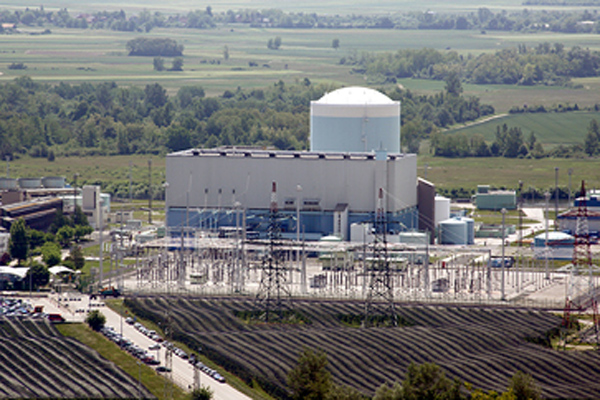
The Krško nuclear power plant in Slovenia
Siemens sets milestone with 3D-printed part for nuclear power plant
MUNICH, March 9, 2017
Siemens has achieved an industry breakthrough with the first successful commercial installation and continuing safe operation of a 3D-printed part in a nuclear power plant.
Because of the stringent safety and reliability requirements in the nuclear sector, achieving this qualification is a significant accomplishment, the company said.
The replacement part produced for the Krško nuclear power plant in Slovenia is a metallic, 108 mm diameter impeller for a fire protection pump that is in constant rotating operation. The water pump provides pressure for the fire protection system at the plant. The original impeller was in operation since the plant was commissioned in 1981; its original manufacturer is no longer in business.
Obsolete, non-OEM parts are particularly well-suited for this new technology as they and their designs are virtually impossible to obtain. This technology thus allows mature operating plants to continue operating and achieving or, as in the Krško case, even extending, their full life expectancy, the company said.
Siemens’ team of experts in Slovenia reverse-engineered and created a “digital twin” of the part. The company’s additive manufacturing (AM) facility in Finspång, Sweden, then applied its advanced AM process using a 3D printer to produce the part.
“We continue to push forward our investments and cutting-edge advancements in additive manufacturing and 3D printing,” said Tim Holt, CEO of Siemens Power Generation Services division. “This achievement at the Krško nuclear power plant is another example of how the digital transformation and the data-driven capabilities we have are impacting the energy industry in ways that really matter. Additive manufacturing’s reduced lead times and faster production optimizes parts replacement and creates real value for our customers.”
Meeting the Krško NPP’s stringent quality and safety assurance requirements required extensive testing that was performed jointly with the Krško operations team over several months, ensuring that the new 3D-printed part would perform safely and reliably. Further material testing at an independent institute as well as a CT scan, showed that the material properties of the 3D-printed part were superior to those of the original part.
“The better than expected performance of this 3D-printed part gave us confidence that we can reach the full life expectancy from our asset,” said Vinko Planinc, head of maintenance at the Krško plant. “Siemens has a long history of innovation in this area and their dedication to providing their customers with the latest, proven innovations made them an excellent partner for this project.”
The Krško plant is among the highest-ranked of European nuclear power plants by the European Nuclear Safety Regulators Group in terms of safety according to assessments following Fukushima. It provides more than one-quarter of Slovenia’s and 15 percent of Croatia’s power, making it vitally important to the region. For over a decade, Siemens has been actively performing modifications and providing service on the plant’s non-nuclear side, including turbine, generator and auxiliary equipment.
Siemens and Krško plan to continue research and development in this area and are looking at advancing the design of parts that are most difficult to produce using classical manufacturing techniques, such as lightweight structures with improved cooling pattern.
Siemens operates a state-of-the-art AM production facility in Finspång where is has been advancing this technology since 2009. Siemens extensively uses AM for rapid prototyping and has introduced serial production solutions for rapid manufacturing of small fuel mixers and for rapid repair of burner tips for mid-size gas turbines.
The first 3D-printed burner component for a Siemens heavy-duty gas turbine has been in successful commercial operation in a power plant in Brno, Czech Republic, since June 2016. It has achieved 1,600 equivalent operating hours without causing any forced outages.
For parts production in industrial gas turbines, the benefits of Siemens’ AM include an approximate 50 percent reduction in lead time and a 75 percent reduction in development time. Siemens recently announced it has finished its first full load engine tests for gas turbine blades completely produced using AM technology. - TradeArabia News Service








